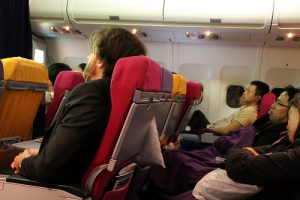Hospitalised patients have a poor night’s sleep on the wards – but the problem could be fixed with airline-style packs containing earplugs and eye masks, researchers suggest.
In what researchers believe is the first in-depth study on hospital sleep patterns, 2005 inpatients at 39 Dutch hospitals filled out questionnaires about the quality of their sleep on the ward the night before compared with usual sleep at home in the past month.
 On average, patients reported having had 83 minutes less sleep during their night in the hospital than at home, waking 44 minutes earlier than their usual time with only 28% of patients waking up in the morning spontaneously.
On average, patients reported having had 83 minutes less sleep during their night in the hospital than at home, waking 44 minutes earlier than their usual time with only 28% of patients waking up in the morning spontaneously.
They also had a more disturbed night – waking up 3.3 times on average compared to twice when they were at home.
The most common reasons for disturbed sleep were reported as noise from other patients, medical devices, pain and toilet visits.
But many of these factors “seem modifiable”, wrote Dr Hilde Wesselius from the Department of Internal Medicine at VU University Medical Center in Amsterdam and her co-authors in the paper published this month in JAMA Internal Medicine.